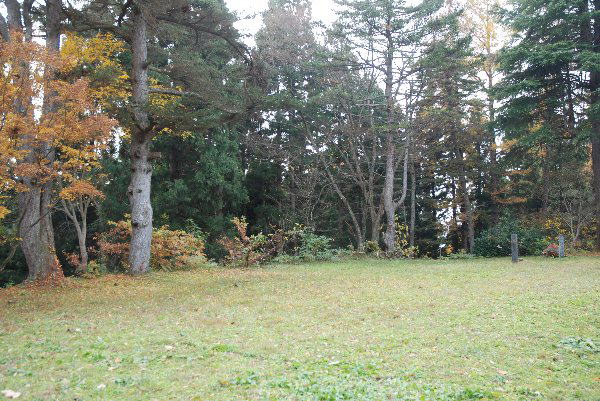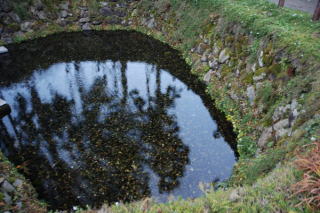102.Yokote in Akita, their groundwater keeps streaming

|
|
| archives 102 | digital walking | english | |
|
|
|||
| home | old home | table | |||
|
|
|||||
102.Yokote in Akita, their groundwater keeps streaming |
||||
 |
||||
This photo shows the ruins of the Kanazawa castle located at the foot of the Ohu-mountain range in the middle of Akita. This site has been spoken as one of the old stockades called the Kanazawa-no-Saku. It is generally known that the site was one of the important stockade belonged to the Kiyohara families who were powerful natives in this area. Also this is the site where it had become the last stage of the Kiyohara families. All of the sites are thickly covered with old cedar trees and nobody is seen there now. In this visit, our English teacher Babu-San would go and see there too. He stayed here in Japan for long time though he is manifest to be a foreigner who was born in the U.S. It is funny that he is going to hit it off with us on those Japanese histories. He as if one of the natives here in the north Japan may want to confirm here local histories with his own eyes having the greatest interest than us. There are not so much talks about the Kanazawa-no-eki civil war because it is not familiar history to us. In generally, most of the histories have been mainly written for the winners not losers. Thus this war was specific loser’s footprints, so there was nothing to be talking about this story mainly. They would be written in short that there were two local civil wars in north Japan in the Heian period. One was the Zenkunen-no-eki war and another was the Gosannen-no-eki. It seems that there is nothing to be written those details but the title of both wars. Actually it was a strange history of civil war that the Central Government had been concerned with two big native groups in north Japan. Then it is hard for me to explain sensibly about this history to Babu-San. Roughly talking, it is as follows: As you can see the north Japan geographically divided with the Ohu-mountain range running from north to south. In those days, east side of the range was called the Mutsu-no-Kuni region and occupied by natives the Abe families, and west side was the Dewa-no-Kuni region controlled by the Kiyohara families. At that time, they were despised from the central Government as the Emishi that means the aboriginal uncivilized people. Both Kiyohara and Abe could be leaders of the Emishi who had resisted and battled against the central Government. But the Abe families had been destroyed at the Zenkunen-no-eki war in 1062, and at the Gosannen-no-eki war in 1087 the Kiyohara families also had been vanished. Later, the north Japan history was succeeded Mr. Kiyohira Fujiwara who was a founder of the Hiraizumi Government. Once it seemed the brilliant culture was in the bloom in the Emishi region of the north Japan, but the curtain of its theater had been fallen down in 1189 because of the pressures from the central Government power. A historian Mr. Takashi Takahashi who is renowned as an expert on the Emish histories describes in his works that it’s hard to make clear the whole stories of the north Japan because historical materials in those days don’t remain so much. Then I’m not qualified to talk details any more. There is a small museum at the foot of the mountain in which they exhibit the colored picture scroll of the Gosannen-no-eki war. It seems to be helpful of visitors to imagine the battles. That could remind us of the cruel spectacles. It also says the blockade of foods supply was taken as a tactic at first in Japan. Now we can see and feel the calm and beauty of a rural scene around there. The time we visit there was the late fall no wonder the General Winter may come soon. It is said that they have to endure a hard life in winter. The cold seasonal wind from the Siberia carries the dampish air through the Japan Sea and hits it on the mountain, then it become a heavy snow falling. I’ve heard the snow used to pile up tow meter high. In snow season, they inhabitants have a well-known event that they are in the habit of enjoying snow dome called the Kamakura festival even now. If we are in Rokugo town near by, we can see many springs called the Yu-taro. Yu means springing in Japanese Kanji character and Taro is Japanese boy’s common name. Water is a bounty from the Ohu-mountain range to the community. They love the springs and maintain it carefully. The atmosphere around this area is quite peaceful indeed. That’s impossible to let visitors remember the story that the brutal war had occurred in there. But for the local people the Emishi, they couldn’t get its history out of their minds forever. It seems the story may continue in their minds as if the water still streams under their ground. By the way, I wonder how this site reflected to Babu-San’s eyes. |
 |
|
|
| home | old home | table |